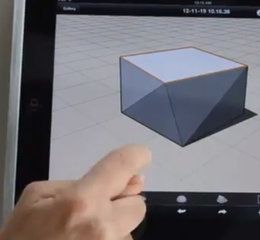


used the Verto Studio application ( running on HoloLens glasses to compare tumor border tracing for preoperative planning in the OR in neurosurgical patients they found that holographic navigation differed from conventional neuronavigation in 64% of patients.
Verto studio 3d review registration#
Van Doormaal and colleagues used the Unity application (Unity Technologies) running on HoloLens glasses to measure fiducial registration error (FRE) on plastic heads and found a mean FRE of 7.2 mm with holographic neuronavigation compared with 1.9 mm for conventional neuronavigation. To this end, several cranial neurosurgical studies have investigated the use of AR head-mounted displays (ARHMDs) with HoloLens (Microsoft Corp.) AR glasses running various navigation applications. Published with permission.Click here to view. A 3D understanding of the tumor and its location in the patient's head is intuitively displayed. No navigation wand is required, so the surgeon's hands remain free. As you can see, the hologram remains superimposed over the patient's head even if the HoloLens wearer moves throughout the room and changes the angle of sight. Hand gestures can be used to change the imaging windowing (as seen at 0:41).

The patient's preoperative T1-weighted brain MR image was reconstructed and exported to the HoloLens glasses running OpenSight, which were used to visualize the hologram of the brain MR image superimposed over the patient's head. 0:32: Here, we demonstrate the novel use of HoloLens AR glasses running the OpenSight application used for neuronavigation in cranial neurosurgery. Additionally, MWBNSs do not allow for a true 3D visualization of the lesion or the approach one must take to get to the lesion. The surgeon must look away from the patient and instead must look at a monitor located on the other side of the room, which can be cumbersome and nonergonomic. Here, two surgeons are seen using an MWBNS. 0:00: MWBNSs for frameless intraoperative neuronavigation are routinely utilized in brain tumor surgery. 3–7 This allows for FIN during neurosurgical cases in a potentially less cumbersome fashion than with MWBNS ( Video 1). Thus, innovations in FIN that are less cumbersome, provide continuous anatomical information, are hands-free, and that are more anatomically intuitive are sought.Īdvances in augmented reality (AR) have enabled the investigation of digital superimposition of radiographic images onto the surgical field using wireless glasses that do not require a physical footprint in the OR. Finally, an understanding of the spatial information provided by the MWBNS requires a steep learning curve and is not intuitive for trainees. Additionally, current MWBNSs do not allow for a true 3D visualization of the lesion or approach to the lesion.

Verto studio 3d review full#
A direct line of sight must be maintained between the MWBNS camera, navigation wand, and navigation star, which can be challenging in an OR full of equipment and moving staff. Additionally, navigation information is only provided when a surgeon picks up the navigation wand (temporarily preventing the use of a bimanual surgical technique), which interrupts the normal surgical workflow as the surgeon looks away from the surgical field and toward a remote monitor. However, MWBNS is unwieldy, as the MWBNS station has a large physical footprint taking up valuable OR space and the room must be arranged around the station. 1 First introduced in 1991 by Kato et al., 2 MWBNS represented a marked improvement in ease of use over cumbersome frame-based navigation systems. M onitor and wand–based neuronavigation stations (MWBNSs) for frameless intraoperative neuronavigation (FIN) are routinely used in brain tumor surgery for planning minimally invasive incisions by circumferentially identifying the tumor-brain interface.


 0 kommentar(er)
0 kommentar(er)
